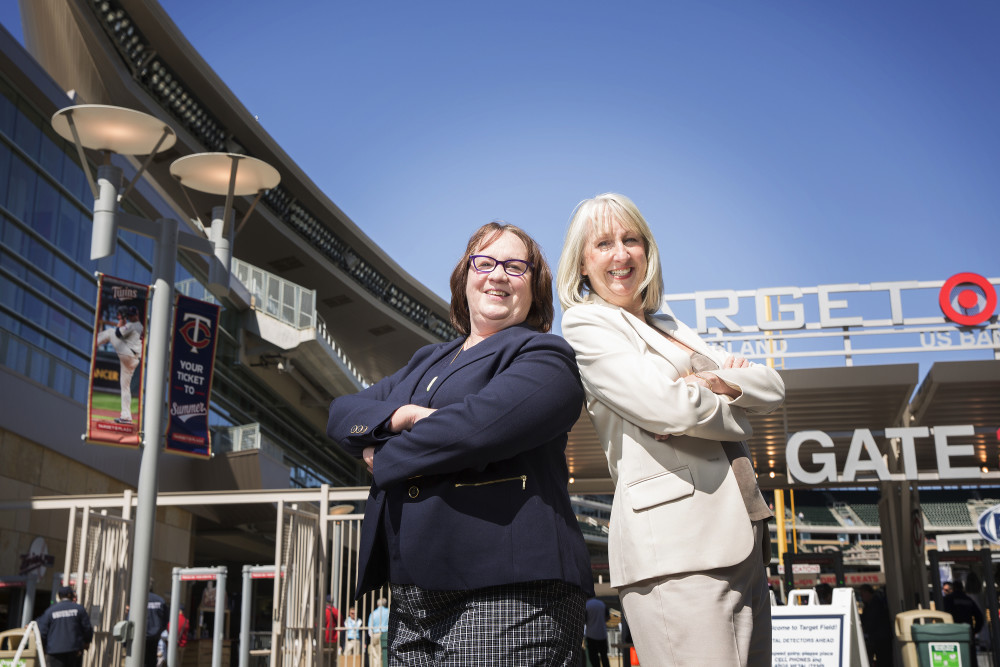By David Phelps
Star Tribune (Minneapolis).
MINNEAPOLIS
Mame O’Meara and Sue Dubbs didn’t much care for each other when they worked as associate media directors at competing Minneapolis ad agencies in the early 1980s.
To clarify: They really did not like one another, especially after their now-gone agencies merged.
But one job-share and 26 years later, the two are back together running a profitable media-buying company called Dubbs & O’Meara that counts the Minnesota Twins, craft brewery Summit Brewing and the Minnesota Zoo as clients.
They have a new office in the suburbs and a third employee they call their “referee” to handle disputes between the two strong-willed partners.
“Clients like that. We have the same skill set but different ideas,” said O’Meara, a Wisconsin native who has lived in the Twin Cities since 1978. “We’ll disagree right in front of a client, but that shows the thought process that is at work.”
At first glance, Dubbs & O’Meara appears old school. It began, after all with two phones, stationery and a calculator for checking rates. It didn’t have its first computer until 1991.
But over time, the practice of placing the right ad in the right medium at the right time has evolved into a science, featuring consumer analytics and metrics and a depth of knowledge about all things digital.
Media buying has gone beyond print and broadcast properties to include social media and things like banner ads on the Internet.
“Digital and social media have not muddied the waters, but they have made the waters flow faster,” said Dubbs, who spent the past six years at CBS radio in Minneapolis on the other side of the media spend, before returning to work with O’Meara earlier this year. “We’re looking at everybody’s (media) assets to determine the best return on the dollar for clients.”
Steve Wehrenberg, a former ad agency CEO who now teaches advertising at the University of Minnesota, said the “whole business is transforming.”
“In the digital space a lot of purchasing is done programmatically,” he said. “Now there’s an inventory of assets that you’re bidding for as opposed to the old days when you’d call a station and say, ‘Hey, Frank, what’s available for next week?'”
In the early days, O’Meara said, she concentrated television advertising on three local Twin Cities stations and three networks. “Now we’re going 10 stations, and the fragmentation of other options is incredible,” she added.
Nevertheless, there is still something to be said about making decisions from the gut.
“We have much more sophisticated data, but we really have to use our common sense in addition to that. You don’t run beer ads at 6 in the morning. You run them when people are thirsty,” O’Meara said.
And with all the focus on digital marketing, there is still room, need and desire for advertising on television.
“We’re looking for things that people do together. Sporting events continue to be communal events. It’s one thing we do with strangers,” O’Meara said. “With TV, we look at prime time for shows that people watch together. You may watch ‘The Voice’ at home alone, but the next day everyone at work will be talking about it.”
On the other hand, advertisers want to be in the digital space because that is where consumers go more and more to make purchases, O’Meara said.
Dubbs & O’Meara dates back to 1989, although Dubbs took a leave of absence of sorts to raise her family and then worked on the sales side of the advertising business.
One of their very first clients, the Minnesota Twins, remains a client today. Several years ago, the women-owned agency was honored as one of the team’s leading diverse business partners.
“They have earned the reputation of being really good at what they do,” Twins President Dave St. Peter said. “They have credibility in maximizing our exposure and meeting our business objectives.”
Recent initiatives for the Twins have included finding the best media channels for reaching a key marketing segment in the 25- to 45-year-old demographic.
“Sometimes we’re buying spots for the brand, but we’re now much more laser targeted and we’re working hard to cultivate a new generation of fans,” St. Peter said.
The team’s recent poor performance doesn’t alter the need for advertising, Dubbs added.
“But it does change the strategy. Sometimes they’re selling season tickets (when times are good) and sometimes its individual games (when things are not so good), but it doesn’t make it harder. The team understands the importance of the product on the field,” she said.
O’Meara, 61, and Dubbs, 60, show no evidence of slowing down and are exploring new business opportunities.
But they still like the phrase they came up with more than a quarter century ago to describe their operation:
“Dubbs & O’Meara aren’t afraid to tell clients where to go.”














































































































































































































































































































































































